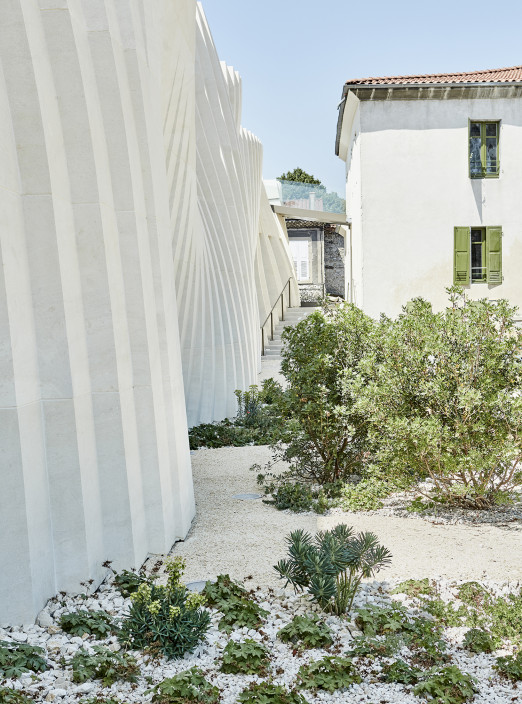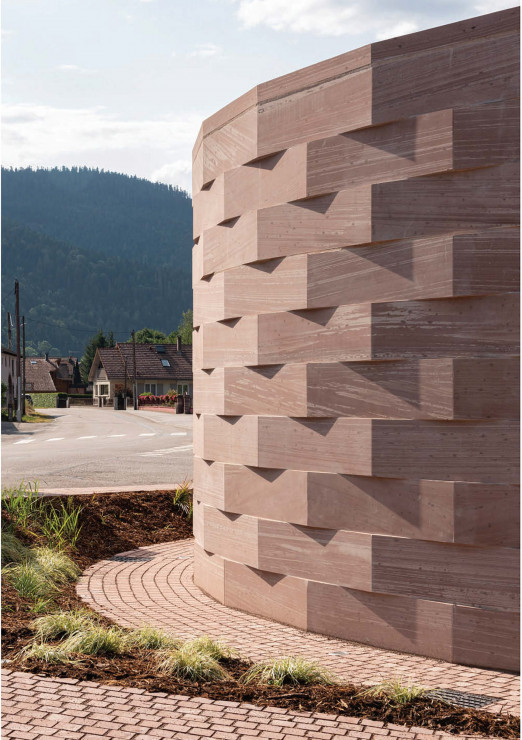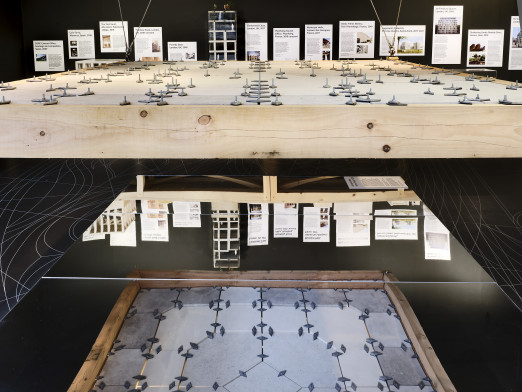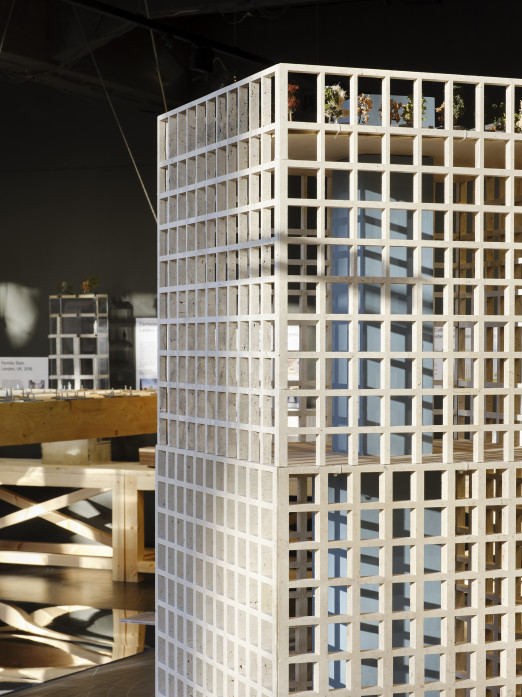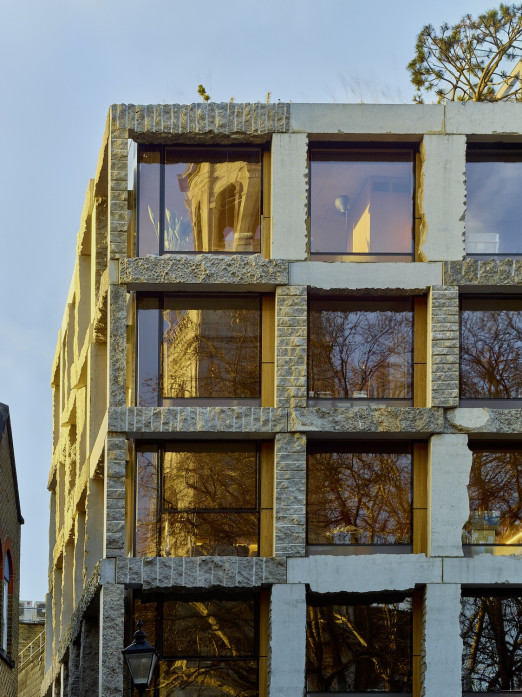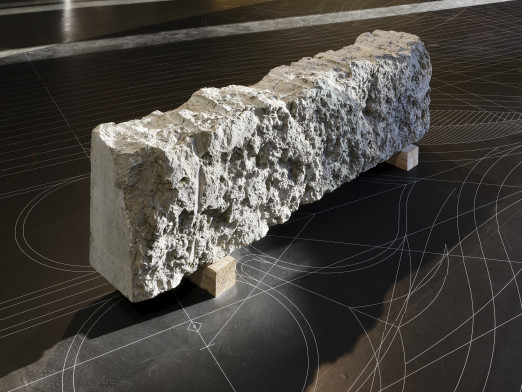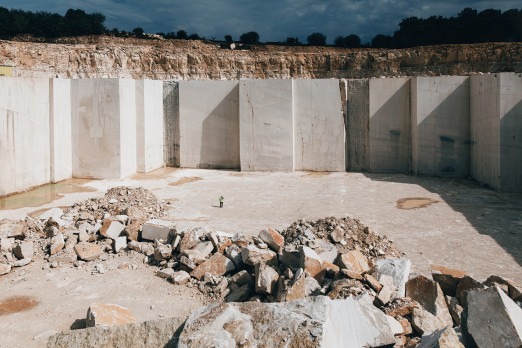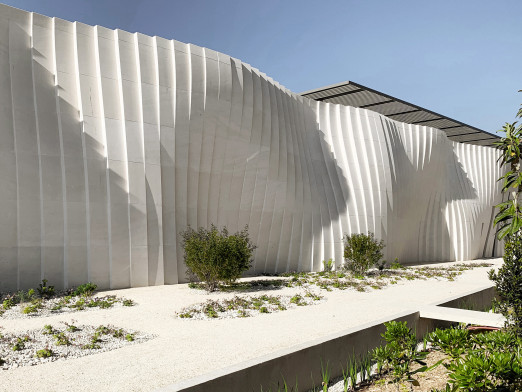A quarry is a site where natural rock is extracted in the form of blocks to use in design projects. Unlike coal and metal mining which results in a lower yield of usable material, stone lies very close to the surface and quarrying requires minimal removal of overlying earth.
The quarrying process begins by drilling a series of intersecting holes into the quarry walls. Diamond-tipped wires are fed into the holes creating a continuous loop. Powered by a motor the wire spins until the desired block is cut. The blocks are tipped down either by pushing with a long steel arm or by inserting a metal ‘bag’ in the cut and then filling it with water or air. The expansion tips the block.
Inherently stone has zero carbon footprint. It is the energy used in quarrying, preparing and lifting the stone into place where CO2 builds up. Typically, if the quarry is in the same country as a building project then the stone structure will have saved 95% of the embodied CO2 against its steel or concrete equivalent. If the stone needs to be shipped in from abroad the saving may reduce to 80% or 70% for Europe and Asia/America respectively. If the stone is especially hard and deep within a quarry the saving will reduce to 60%.
Read more in the Stone Tower Report.
You can find out more about the qualities of stone by visiting The New Stone Age exhibition and associated public programme curated by Amin Taha and Alex Cotterill of Groupwork Architects, Pierre Bidaud of The Stonemasonry Company Ltd and Steve Webb of Webb Yates Engineers, with the Building Centre. Supported by the Built Environment Trust.
We would like to thank our headline sponsors Polycor and The Stonemasonry Company Ltd.



